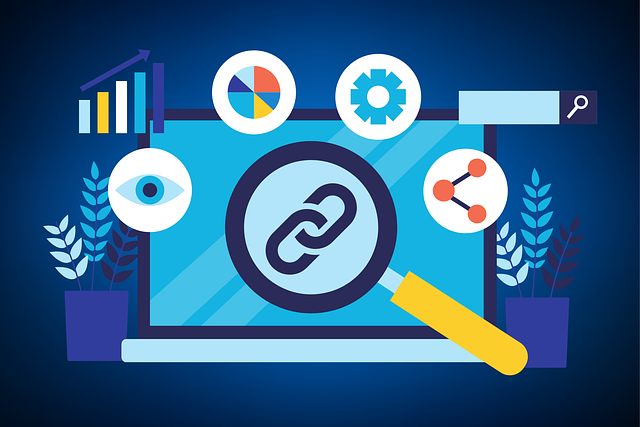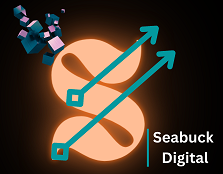I. Introduction
If you’re involved in SEO, you’ve likely heard the term “backlink analysis” being thrown around. But what exactly is it, and why is it important for your website’s search engine optimization?
In this complete guide to backlink analysis, we’ll delve into what backlinks are, the benefits of analyzing them, how to conduct a thorough analysis and strategies for building quality backlinks. But first, let’s start with the basics.

A. Explanation of backlink analysis
Backlink analysis refers to the process of examining the links that point to your website from external sources. These links, known as backlinks, are important signals to search engines about the authority and relevance of your website. By analyzing your backlink profile, you can gain insights into the quality and quantity of your links, as well as those of your competitors.
B. Importance of backlink analysis for SEO
In the world of SEO, backlinks are crucial for ranking well in search engine results pages (SERPs). Search engines like Google use backlinks to determine the quality and relevance of a website, and a strong backlink profile can improve your website’s authority and trustworthiness. By analyzing your backlink profile, you can identify areas for improvement and make data-driven decisions about your link-building strategy.
C. Purpose of the article
The purpose of this article is to provide a complete guide to backlink analysis for SEO practitioners, website owners, and anyone looking to improve their website’s search engine visibility. By the end of this guide, you’ll have a solid understanding of what backlinks are, how to analyze them, and strategies for building high-quality links to improve your website’s search engine rankings.
Are you excited to learn more? Let’s dive in!
II. What Are Backlinks?
Now that we have a basic understanding of what backlink analysis is and why it’s important, let’s dive deeper into the world of backlinks.

A. Definition of backlinks
A backlink, also referred to as an inbound link, denotes a hyperlink from one website to another. Essentially, it serves as a positive endorsement from one site to another, signifying that the linked website is a reliable and credible source of information. Backlinks are crucial for SEO because they help search engines understand the relevance and authority of a website.
B. Types of backlinks
There are several types of backlinks, each with its own level of authority and impact on SEO. The most familiar types of backlinks are:
- Natural Backlinks – Organic backlinks, also known as natural backlinks, are links that are created spontaneously when other websites link to your content due to their perceived value and usefulness.
- Guest Post Backlinks – Guest posting involves writing articles for other websites in exchange for a backlink to your website.
- Forum Backlinks – These are links acquired from forum discussions and are often considered low-quality because they are easy to manipulate.
- Directory Backlinks – Directory links are acquired from web directories and are considered low-quality because they often involve payment.
- Editorial Backlinks – These are links that are earned when other websites link to your content naturally, without any solicitation or payment.
- Image Backlinks – These are links that come from images on other websites, often in the form of image credit links.
- Broken Link Backlinks – These are links acquired by finding broken links on other websites and offering to replace them with links to your own content.
- Social Media Backlinks – Links from social media platforms like Facebook, Twitter, and LinkedIn can also help improve your website’s SEO.
- Reciprocal Backlinks – These are links that are exchanged between two websites, often as part of a link-building agreement. While reciprocal links can be helpful in some cases, they are generally considered to be lower quality than editorial or natural backlinks.
- Comment Backlinks – Commenting on blog posts and leaving a link to your own website is a common tactic for acquiring backlinks. However, most comment links are considered low-quality and may even be seen as spammy.
- Sitewide Backlinks – These are links that appear on every page of a website, such as in the header or footer. While sitewide links can be valuable in some cases, they are generally considered to be lower quality than contextual links.
- Nofollow Backlinks – Nofollow links are links that have the rel=”nofollow” attribute added to them, which tells search engines not to follow the link or give it any SEO value. While nofollow links may not directly impact your website’s SEO, they can still be valuable for driving traffic and building brand awareness.
C. Importance of quality backlinks
While it’s important to have a diverse range of backlinks, the quality of those links is what matters most. High-quality backlinks come from reputable and authoritative websites that are relevant to your industry. These links signal to search engines that your website is a trusted and authoritative source of information, which can lead to improved search engine rankings and increased organic traffic.
In the next section, we’ll explore the benefits of backlink analysis and how it can help you identify high-quality backlinks and improve your website’s SEO.
III. Benefits of Backlink Analysis
Backlink analysis is a crucial part of any successful SEO strategy. By analyzing your website’s backlinks, you can gain valuable insights into which links are helping to improve your search rankings and which ones may be holding you back. In this section, we’ll explore some of the key benefits of backlink analysis.

A. Identifying high-quality backlinks
One of the primary benefits of backlink analysis is the ability to identify high-quality backlinks. High-quality backlinks are links that come from authoritative websites in your industry and are relevant to the content on your website. These links can have a significant impact on your website’s search rankings, as they signal to search engines that your content is trustworthy and valuable.
By conducting a backlink analysis, you can identify which links are high-quality and which ones may be low-quality or even harmful to your website’s SEO. Once you’ve identified high-quality links, you can focus on building more links from similar authoritative websites in your industry.
B. Finding link-building opportunities
Another benefit of backlink analysis is the ability to find new link-building opportunities. By analyzing your competitors’ backlink profiles, you can identify websites that are linking to them but not to you. These websites may be great targets for your own link-building efforts, as they have already demonstrated an interest in your industry.
Additionally, by analyzing the content on your website that is attracting backlinks, you can identify topics and formats that are particularly popular in your industry. This information can be used to guide your future content creation and link-building efforts.
C. Assessing the impact of backlinks on search rankings
Finally, backlink analysis can help you assess the impact of your existing backlinks on your website’s search rankings. By analyzing the anchor text, domain authority, and other metrics associated with your backlinks, you can gain insights into which links are helping to improve your rankings and which ones may be hurting them.
This information can be used to guide your future link-building efforts and to make adjustments to your existing backlink profile. To boost your search rankings and attract more visitors to your website, it is essential to concentrate on obtaining top-notch, pertinent links from respected websites in your industry.
In conclusion, backlink analysis is a powerful tool for improving your website’s SEO. By identifying high-quality backlinks, finding new link-building opportunities, and assessing the impact of your existing backlinks, you can develop a more effective link-building strategy and continue to improve your search rankings over time.
IV. How to Conduct Backlink Analysis
Now that you understand what backlinks are and their importance for SEO, it’s time to dive into how to conduct a backlink analysis. Conducting a thorough backlink analysis is an essential step in developing an effective SEO strategy.

A. Using backlink analysis tools
The first step in conducting a backlink analysis is to use a backlink analysis tool. There are several tools available online that can help you analyze your backlinks and those of your competitors. Some of the popular backlink analysis tools include Ahrefs, Moz, SEMrush, Majestic, and more. These tools will give you a comprehensive overview of your backlink profile, including the number of backlinks, referring domains, anchor text distribution, and more.
B. Analyzing backlink quality
After you have gathered your backlink data, the next step is to analyze the quality of your backlinks. Not all backlinks are created equal. Backlinks of superior quality originate from websites that are not only pertinent but also possess authority and credibility in their respective domains. Low-quality backlinks, on the other hand, can hurt your SEO efforts and potentially lead to a penalty from search engines.
When analyzing backlink quality, look at the domain authority of the website linking to your site, the relevance of the content, the placement of the link, and the anchor text used. Ideally, you want backlinks from high authority websites with relevant content, natural anchor text, and placed within the body of the content.
C. Identifying link-building opportunities
Finally, the last step in conducting a backlink analysis is identifying link-building opportunities. This involves looking for potential websites and web pages that you can reach out to and request a link from. These could be websites or pages that link to your competitors but not to your site.
When identifying link-building opportunities, focus on websites with high domain authority, relevant content, and a natural link profile. It’s also essential to ensure that the website is not linking to spammy or low-quality websites.
In conclusion, conducting a backlink analysis is crucial for developing an effective SEO strategy. By using backlink analysis tools, analyzing backlink quality, and identifying link-building opportunities, you can improve your backlink profile, boost your search engine rankings, and drive more traffic to your website.
V. Metrics to Evaluate Backlinks
Metrics are essential for evaluating the quality of backlinks. In this section, we will discuss the most important metrics used to evaluate backlinks.

A. Domain authority and page authority
Domain Authority (DA) and Page Authority (PA) are metrics developed by Moz that measure the strength and authority of a website’s domain and specific pages. The DA and PA scores are measured on a scale of 1 to 100. The higher the score, the more authoritative the website or page is.
When analyzing backlinks, it’s important to prioritize links from websites with high DA and PA scores. These links carry more weight and can significantly boost your own website’s authority.
B. Trust flow and citation flow
Trust Flow and Citation Flow are two metrics developed by Majestic that measure the quality and quantity of backlinks. Trust Flow measures the trustworthiness of a website, while Citation Flow measures the number of links pointing to that website.
A website with a high Trust Flow and low Citation Flow is considered to have high-quality backlinks. Conversely, a website with a high Citation Flow and low Trust Flow may have a large number of low-quality backlinks.
C. Anchor text diversity and relevance
The anchor text refers to the visible and clickable text present in a hyperlink. Anchor text diversity and relevance are important factors to consider when analyzing backlinks.
Diversity refers to the variety of anchor texts used to link to your website. If a large percentage of your backlinks use the same anchor text, it may appear unnatural to search engines, which can negatively impact your search rankings.
Relevance refers to how closely the anchor text matches the content on your website. For example, if your website sells sports equipment and the anchor text used in a backlink is “buy running shoes”, it is considered relevant and can help boost your search rankings for keywords related to sports equipment.
In conclusion, when conducting backlink analysis, it’s important to consider a variety of metrics to evaluate the quality of backlinks. Prioritizing links from high-authority websites with relevant anchor text and diverse link profiles can significantly improve your search rankings.
VI. Backlink Analysis for Competitor Research
Competitor research is an essential part of any marketing strategy, and backlink analysis can help you gain insight into your competitors’ online presence. By analyzing your competitors’ backlink profiles, you can identify their strengths and weaknesses and use that information to improve your own backlink strategy.

A. Identifying competitors
Before you can analyze your competitor’s backlink profiles, you need to identify who they are. Start by searching for the keywords you want to rank for and see which websites come up at the top of the search results. These are the businesses or entities that are most likely to compete with you.
You can also use tools like Ahrefs or SEMrush to identify your competitors. These tools can provide you with a list of websites that are ranking for the same keywords as you.
B. Analyzing competitor backlink profiles
Once you have identified your competitors, the next step is to analyze their backlink profiles. This involves looking at the number of backlinks they have, the quality of those backlinks, and the anchor text used in those backlinks.
You can use backlink analysis tools to gather this information. Ahrefs and SEMrush are two popular tools that can help you analyze your competitors’ backlink profiles.
C. Identifying gaps and opportunities in your own backlink profile
By analyzing your competitors’ backlink profiles, you can identify gaps and opportunities in your own backlink profile. Look for websites that are linking to your competitors but not to you. These websites could be potential link-building opportunities for your business.
You can also look for weaknesses in your competitors’ backlink profiles and use that information to your advantage. For example, if your competitor has a lot of low-quality backlinks, you can focus on building high-quality backlinks to improve your own backlink profile.
Overall, analyzing your competitors’ backlink profiles can help you improve your own backlink strategy and gain a competitive edge in search results.
VII. Strategies for Building Quality Backlinks
Building high-quality backlinks is an essential component of any successful SEO strategy. Here are a few successful strategies for building quality backlinks:

A. Creating high-quality content
One of the best ways to attract backlinks is by creating high-quality content that is informative, engaging, and useful to your target audience. When you publish great content, other websites and blogs will naturally link back to your website, increasing your backlink profile.
B. Guest posting on relevant websites
Another effective way to build quality backlinks is by guest posting on other websites within your industry. When you write a guest post, you can include a link back to your website in the author bio, which can help increase your website’s visibility and credibility.
C. Building relationships with industry influencers
Building relationships with influencers in your industry is another great way to build quality backlinks. By networking with influencers and establishing yourself as an authority in your niche, you can gain access to their followers and earn backlinks from their websites and social media profiles.
Overall, building quality backlinks takes time and effort, but it is essential to improving your website’s search engine rankings and driving more traffic to your site. By creating great content, guest posting, and networking with industry influencers, you can increase your website’s visibility and attract more high-quality backlinks.
VIII. Tracking and Measuring Success
Tracking and measuring the success of your backlink strategy is crucial to ensure that your efforts are paying off. By analyzing the data, you can identify what’s working and what’s not, and make necessary adjustments to optimize your strategy.

A. Tracking backlink metrics
One way to track the success of your backlink strategy is by monitoring your backlink metrics. These metrics include the number of backlinks, the domain authority of the linking site, and the anchor text used to link to your site.
You can use backlink analysis tools such as Ahrefs, Majestic, or SEMrush to track your backlink metrics. These tools can also help you identify new backlink opportunities and track your competitors’ backlink profiles.
B. Measuring traffic and conversion rates
Another way to measure the success of your backlink strategy is by monitoring your website’s traffic and conversion rates. If your backlinks are driving a significant amount of traffic to your site, it’s a good sign that your strategy is working.
You can use Google Analytics to track your website’s traffic and monitor how much of it is coming from your backlinks. You can also set up conversion tracking to measure how many visitors are taking specific actions on your site, such as filling out a contact form or making a purchase.
C. Analyzing and adjusting backlink strategy
Once you’ve collected and analyzed your data, it’s time to make adjustments to your backlink strategy. If certain types of backlinks are driving more traffic and conversions than others, you may want to focus more on those.
You should also regularly assess the quality of your backlinks and disavow any that are low quality or spammy. This will help ensure that your backlink profile remains strong and healthy.
In addition, you may want to experiment with different tactics for building backlinks, such as creating different types of content or reaching out to new influencers. By constantly testing and refining your strategy, you can ensure that it continues to be effective and drives the results you’re looking for.
IX. Conclusion
A. Recap of Backlink Analysis
In conclusion, backlink analysis is an essential aspect of SEO that can help businesses achieve better search engine rankings and drive more traffic to their websites. Through the use of various tools and techniques, businesses can identify high-quality backlinks, assess their impact on search rankings, and find new opportunities for link building.
B. Importance of ongoing optimization and monitoring
It is important to regularly monitor and optimize backlinks as the algorithms used by search engines are constantly changing. By keeping up with the latest trends and best practices, businesses can stay ahead of the competition and continue to see positive results from their backlink strategy.
C. Future trends in Backlink Analysis
In the future, it is expected that backlink analysis will continue to evolve with advancements in technology and changes in search engine algorithms. It is likely that more emphasis will be placed on the quality and relevance of backlinks, and businesses will need to adapt their strategies accordingly.
Overall, backlink analysis is a powerful tool that should not be overlooked by businesses looking to improve their online visibility and drive more traffic to their website. By following the tips and strategies outlined in this guide, businesses can create a successful backlink strategy that yields positive results for their SEO efforts.
Read More:
Local SEO Strategies: The Complete Guide – Seabuck Digital
Key SEO Metrics to Track: The Complete Guide – Seabuck Digital

